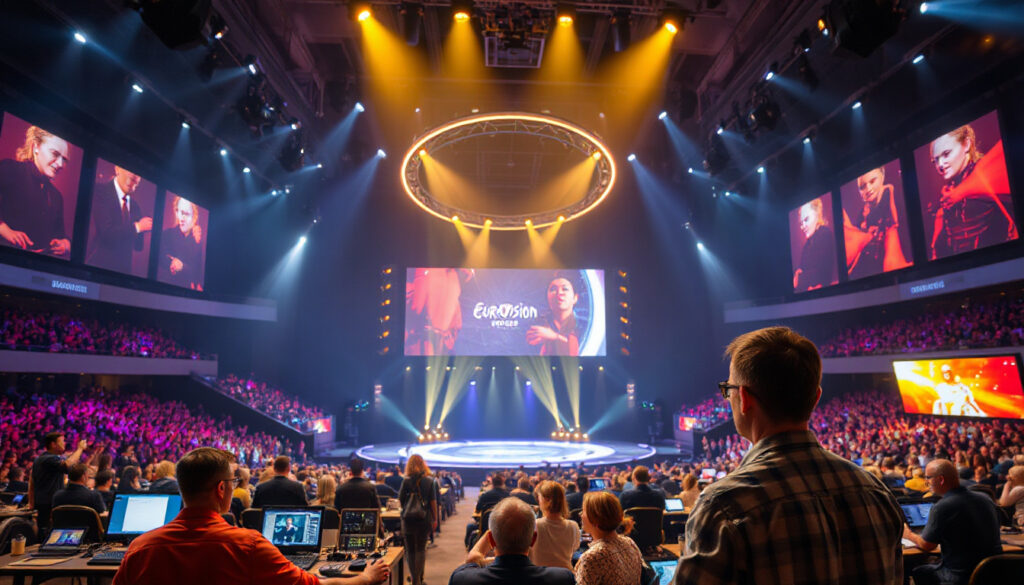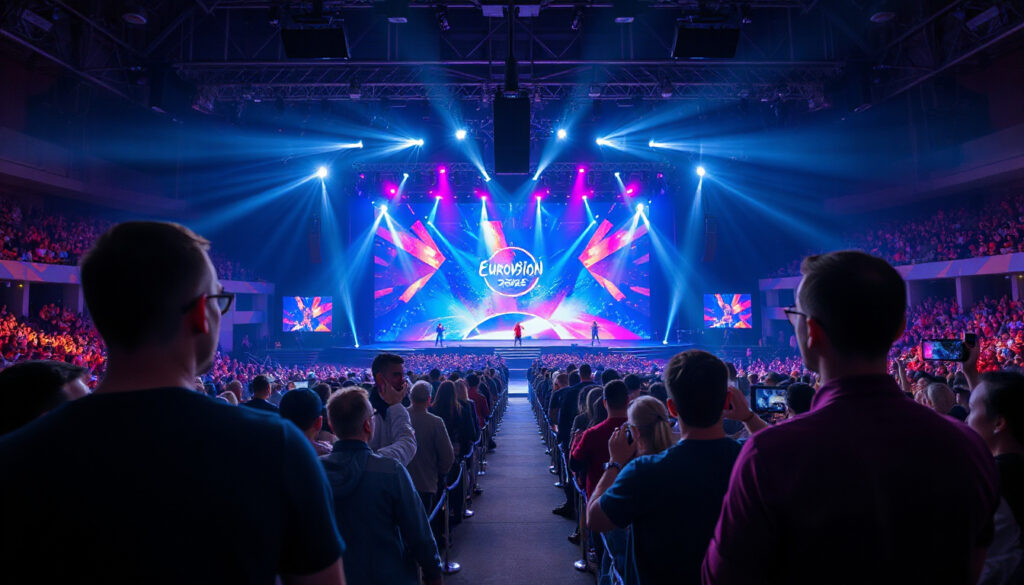Have you ever thought about what it takes to line up every detail before the dazzling show at Eurovision? The technical rehearsal schedule shows the work behind the event. The 2026 contest, held at Vienna’s Wiener Stadthalle, follows a tight and well-planned routine. This plan matters to many who love the event.
Why Are Technical Rehearsals Vital?
Technical rehearsals serve as the backbone of live shows like Eurovision. They join each camera view, light cue, stage effect, sound level, and performer step. When these parts work close together, the team finds and fixes issues ahead of time. Millions watch the live broadcast, and they expect clear music, images, and storytelling. Rehearsals also let artists learn the stage setup and adjust their live acts.
Overview of Eurovision 2026 Rehearsal Structure
The full schedule for 2026 is not yet set. We base our view on past contests, such as Eurovision 2025. Rehearsals last about two weeks and come in several parts:
-
First and Second Technical Rehearsals: Each country gets a 30-minute slot first and a 20-minute slot second. The press does not see the first sessions, which keeps performance details private.
-
Viewing and Feedback Sessions: After each rehearsal, teams watch recorded clips in a private room. They discuss camera views, dance moves, makeup, and stage effects, then return to improve their act.
-
Dress Rehearsals: These are complete run-throughs done before the semi-finals and the grand final. They copy live broadcast conditions with an audience and voting rules.
Eurovision 2026 stars on three main broadcast nights:
- Semi-Final 1: 12 May 2026
- Semi-Final 2: 14 May 2026
- Grand Final: 16 May 2026
Each day also has dress rehearsals in the afternoon and evening so that the team can tune every part of the production.

Key Components and Expectations in the 2026 Rehearsal Schedule
-
Venue Preparation and Stage Setup
The Wiener Stadthalle holds 16,152 seats and has hosted Eurovision before in 2015. Staff work early on the stage design to match the new look for 2026. They fit each act’s tech needs, such as LED screens, rigging for soaring moves, and timed light cues.
-
Sound and In-Ear Monitoring
Each rehearsal includes sound checks. Performers try in-ear monitors that help them hear their vocals and the music clearly. This step can mean the difference between a smooth song and a vocal mishap.
-
Camera and Lighting Coordination
Eurovision is known for its active camera moves, like crane shots and close-ups that hit musical highs. During rehearsals, camera operators and lighting technicians work close to capture every planned moment.
-
Safety and Logistics Walkthroughs
Rehearsals begin with briefings on safety and tours of backstage areas. Teams visit dressing rooms, makeup stations, and note the routes for coming on and off stage. This clear guidance cuts surprises and helps stage changes go smoothly.
-
Choreography Adjustments
Rehearsal days let teams try out dance steps and adjust moves. They may change dancer positions, shift camera angles, or retime stage effects to meet the space and tech rules.
What Viewers and Fans Should Know
-
During the initial rehearsals, neither fans nor press see live acts. This quiet phase helps keep the shows a secret until the big day.
-
Dress rehearsals may allow fans to attend and might be shared online. These sessions show many of the final details.
-
Rehearsals are usually set during daytime and early evening in Vienna’s time. This schedule moves one act after the next without delay.
How to Follow the Rehearsal Schedule in 2026
Fans who want to track when each act appears can check online sources. The official Eurovision site and fan pages update daily rehearsal calendars. They list:
- Exact times by country
- Which sessions are open for public view or online streaming
- Updates on any changes or delays
A clear timetable helps fans plan viewing meet-ups or online chats around their favorite acts. This link of efforts builds more excitement as the show nears.
Takeaways for Future Participants and Organizers
- Early and complete rehearsals cut last-minute live errors.
- Open talks between the technical team and artists smooth the setup of complex tech parts.
- A focus on safety and simple backstage routines helps performers stay calm and focused.
Next Steps for Fans and Participants
If you plan to attend Eurovision 2026 or watch online, keep an eye on updates from the European Broadcasting Union (EBU) and local broadcasters in Austria. The final schedule, with exact times, will be announced soon to guide both teams and fans.
Knowing the timetable lets fans see the work behind every stage moment. It also gives a deeper view into how one of the largest music events online comes together.
Eurovision 2026 brings a schedule that joins art, technology, and live performance. Watching the rehearsals gives us a look at how every piece links together for unforgettable entertainment. Whether you are a fan, an artist, or just curious, understanding this schedule helps you see the event on a deeper level.







